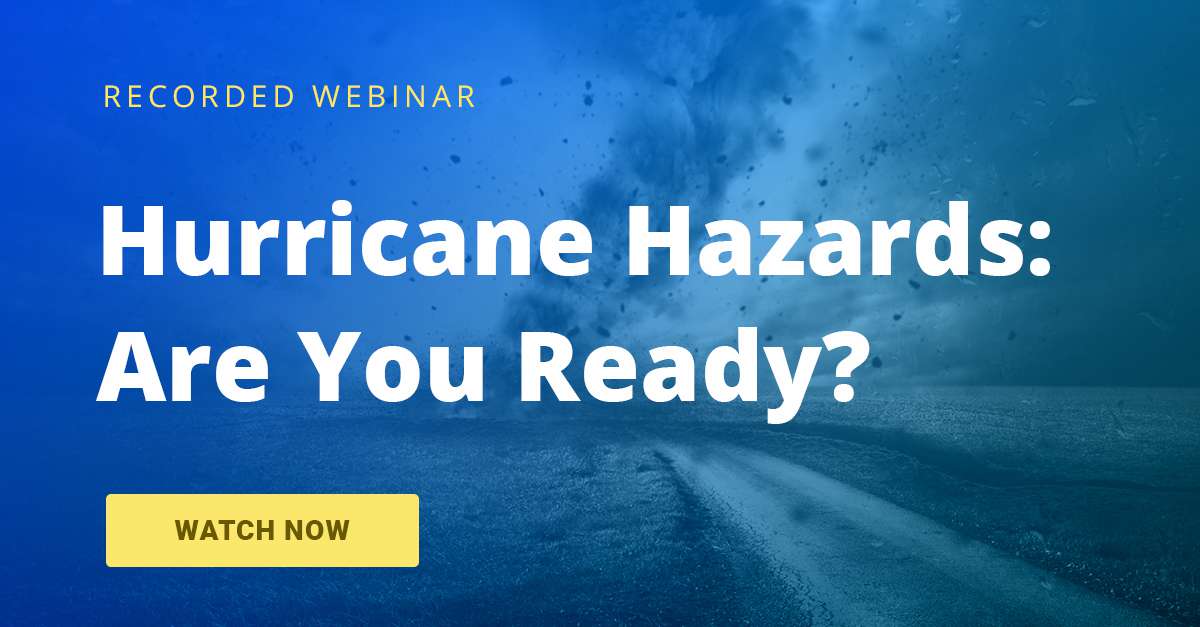4 Ways To Shorten Your Organization’s Post-Hurricane Recovery Time
We have discussed the impact of some of the most destructive recent hurricanes; the loss of life, injuries and property damage costs can be staggering. Businesses are also at risk, even during a near-average hurricane season like this year is forecasted to be.
A Category 4 or 5 hurricane can lower U.S. production and increase unemployment, raise gas prices and depress financial markets. An effective preparedness plan focuses on hurricane recovery in addition to preparation.
Just because a building is still standing doesn’t mean it’s operational, and one storm can cripple and permanently close a business if a strong recovery plan is not in place.
Joe Trainor, program director of the Disaster Science and Management program and an associate professor of public policy and administration at the University of Delaware, said a recovery plan addresses the key elements of a company’s resilience.
“Envision a power loss but think beyond simply needing a power generator,” he said during a recent AlertFind webinar. “You need to plan for loss of infrastructure. You may lose phone and internet access, for example. If a building is damaged, then customers and employees may not be able to arrive and you might not be able to receive supplies. Can you survive? And for how long?”
How Recovery Plans Can Limit Ongoing Damages
With a combination of research and the use of emergency notification systems (ENS) -- which keep companies in touch with their employees amid disruptions -- businesses can combat these common issues.
Trainor offered four tips for organizations to use when drafting a hurricane preparedness plan.
1. Start with a simple conversation. When considering hurricane recovery for your business, a preemptive dialogue with your workforce is a critical early step.
“It may sound silly, but many employers never talk to their employees about what they would do and what the expectations are during and following an emergency,” Trainor said. “This addresses any disconnect that may exist.” Incorporating those ideas into your preparedness plans keeps ENS messaging consistent. And with hurricane season underway, the time to have this conversation is now.
2. Ensure safety first, then resume work. You can use your ENS to conduct safety checks with your employees. It can also redirect employees to other sites or to work from home to help maintain productivity after a hurricane.
“There’s some balance required here. Give your people a little space to be creative,” Trainor said. “Be clear about what the goal is – taking care of clients – and then give your employees space to find ways to do that. Maybe your office is flooded and they need to Facetime or Skype clients instead of meeting with them in the office.”
3. Prepare to go analog. In the webinar, Trainor described a situation in which a retailer stayed open after a hurricane, despite the loss of electronic scanning equipment. The staff had to use calculators and manual imprinters for credit card purchases. That meant some preemptive training, but ultimately proved successful. Staying open is great, but staying open while keeping employees working and making sales is the mark of an effective recovery plan.
4. Research and networking can lead to ideas. Trainor said companies can find the best hurricane recovery ideas by looking in their own communities.
“Never start from zero,” he said. “You might look to local or even state-level emergency management agencies because they are thinking through these kinds of problems. They’re often pretty keen to connecting with local businesses and helping them think about their readiness. There’s also business-specific resources, like your local chamber of commerce, and professional associations for business continuity that you can learn from.”
To learn more from emergency preparedness expert Joe Trainor about readying your organization for hurricane season, watch our new webinar, “Is Your Organization Hurricane-Ready? 5 Actions To Take Now.”

You are well on your way toward protecting your staff and organization.
Take the next step toward protecting your organization by learning more about emergency notification systems and the vital role they play in your emergency preparedness plan.
